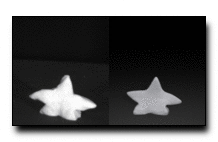 |
We present an extension to Lagrangian finite element
methods to allow for large plastic deformations of solid materials.
These behaviors are seen in such everyday materials as shampoo, dough,
and clay as well as in fantastic gooey and blobby creatures in special
effects scenes. To account for plastic deformation,
we explicitly update the linear basis functions defined
over the finite elements during each simulation step. When these
updates cause the basis functions to become ill-conditioned, we remesh
the simulation domain to produce a new high-quality finite-element
mesh, taking care to preserve the original boundary. We also introduce an
enhanced plasticity model that preserves volume and includes creep and work
hardening/softening. We demonstrate our approach
with simulations of synthetic objects that squish, dent, and flow.
To validate our methods, we compare simulation results to
videos of real materials.
A. W. Bargteil, C. Wojtan, J. K. Hodgins, G. Turk
"A Finite Element Method for Animating Large Viscoplastic Flow."
In ACM Transactions on Graphics (SIGGRAPH 2007), August 2007, vol. 26, No. 3.
Download PDF
BibTex
|





